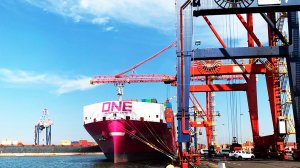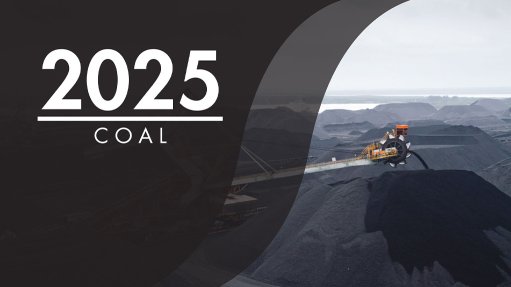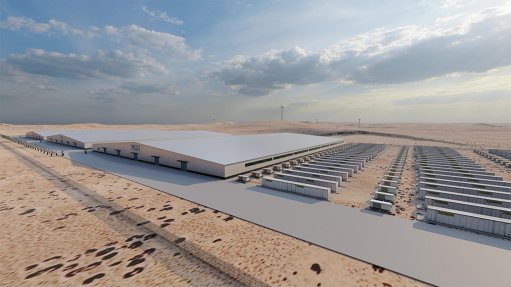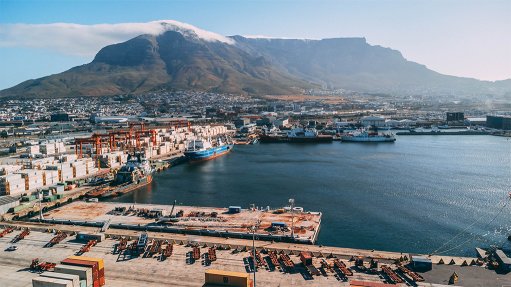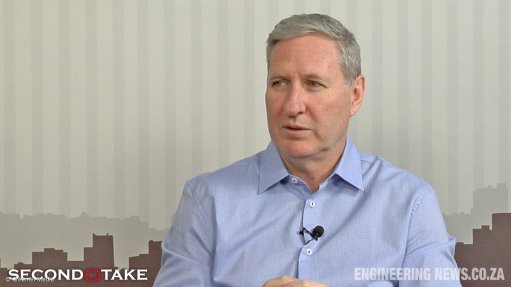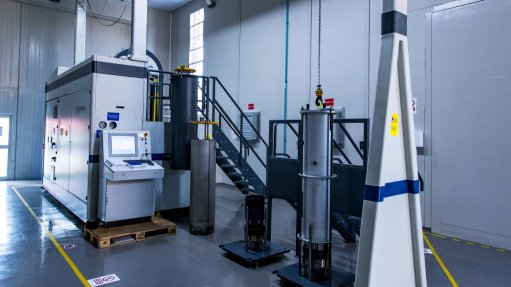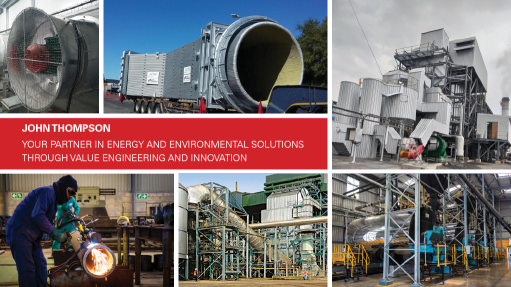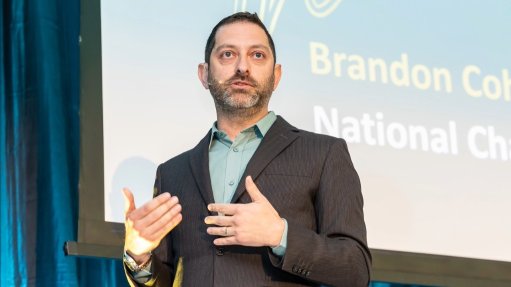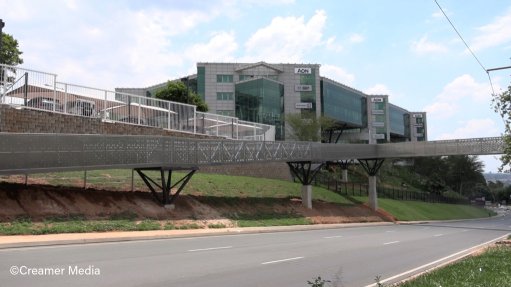TPT reflects on progress made with turnaround strategy
State-owned Transnet Port Terminals (TPT) has made progress in improving its operational performance and with investment into new assets since it announced a turnaround strategy in October 2023.
Speaking at a Transport Forum event hosted on May 7, TPT CE Jabu Mdaki emphasised the utility’s focus on being more cost effective and customer centric while using assets more effectively.
He mentioned that TPT’s desired state was to be a globally recognised regional terminal operator of choice by operating sustainably and competitively across South Africa’s 21 port terminals.
Transnet Group COO Solly Letsoalo commented that poor efficiencies historically had led to high costs of operating for the entity and customers; however, he was confident about the entity’s progress in turning this around, citing the Durban Container Terminal with its Pier 1 and Pier 2, as well as the modernised Cape Town Container Terminal, as notable examples of progress.
Transnet currently comprises seven businesses: Transnet Rail Infrastructure Manager, Transnet Rail Operating Company, Transnet Engineering, Transnet National Ports Authority, TPT, Transnet Pipelines and Transnet Property.
Transport costs account for 11.2% of GDP in South Africa, which is higher than the global leader, the US, at 8%.
About 60% of the country’s GDP is generated by inland provinces, with Gauteng contributing 35% of the country’s GDP, which highlights the necessity of efficient logistics to the ports.
The distance from Gauteng to the nearest port is 600 km by road and 800 km by rail.
Letsoalo explained that 27% of South Africa’s GDP was reliant on efficient logistics for its sustainability – which amounted to R500-billion worth of primary industries and R735-billion worth of secondary industries.
Products from many industries have a high rail conformance owing to product uniformity, density and distance to market, however, are restricted by declining rail performance.
“The speed of Transnet becomes the speed of the whole economy,” Letsoalo stated.
He reiterated the entity’s mandate of lowering the cost of doing business in South Africa, enabling economic growth and ensuring security of supply through providing appropriate port, rail and pipeline infrastructure so that industries can be globally competitive.
Letsoalo added the group’s strategic intent was to practice good governance, including property asset and fund management, collaborate with the private sector, be financially sustainable and grow market share not just locally but globally.
POLICY DRIVERS
Several policies, including the National Rail Policy (NRP), the Freight Logistics Roadmap, the Economic Regulation of Transport Act, the Ports Act and the National Treasury Guarantee Framework Conditions (NTGFC), have been driving change within Transnet.
Notably, the NRP enabled the separation of Transnet’s rail infrastructure and operator functions, as well as private-sector access to the network.
In turn, the NTGFC allows for the establishment of a rolling stock leasing company and for private-sector investment to be crowded in.
All the policy reforms in recent years aim to modernise infrastructure, improve operational efficiency, increase capacity, promote sustainable practices and drive growth.
The Ports Act allows for corporatisation of a National Ports Authority independent from Transnet, which will expand the participation of private-sector companies in the port environment.
Letsoalo pointed out that these policies not only impacted Transnet but the broader transport and logistics market. It introduced new role-players, enhanced competition, increased regulatory oversight, and helped ensure fair pricing and greater accountability between logistics companies and their stakeholders.
The market is also becoming more attractive to private-sector investment and collaboration, as well as modal integration.
He mentioned Transnet’s goal of moving 250-million tonnes of freight on rail within the next five years, compared with the current 160-million tonnes, thereby moving an additional 90-million tonnes through rail and not on road, to reduce overall logistics costs and improve value chain efficiency, particularly for bulk commodities such as coal and iron-ore.
For 2025/26, Transnet is aiming to move 180-million tonnes of freight on the rail network.
“There are a lot of initiatives that are now under way to involve the private sector in port and rail, including for rail operators to utilise inactive railway lines and lease rolling stock,” Letsoalo confirmed, adding that procurement processes were also being streamlined to align with private sector procurement processes in terms of timelines and costs.
NOTABLE PROGRESS
Western Cape Terminals acting managing executive Oscar Borchards said TPT was working to improve Saldanha Bulk Terminal’s throughput from 50-million tonnes in 2024/25 to 55-million tonnes in 2025/26, as well as reach 93% equipment availability.
The terminal has already progressed with bringing a third tippler online, signing long-term maintenance contracts, concluding mid-life refurbishing of equipment and lowering its procurement process timeline to three days, compared with three weeks previously.
TPT is also working to export seven-million tonnes of manganese from Saldanha’s multipurpose terminal, compared with 6.3-million tonnes of manganese exported in 2024/25.
At Cape Town Container Terminals, 627 000 twenty-foot equivalent units (TEUs) were moved in 2024/25, with the operation now focusing on increasing road-to-rail migration, unlocking more container capacity, improving productivity with new equipment and involving more private-sector companies in its operations.
Additionally, the Port of Cape Town is working with the Council for Scientific and Industrial Research to devise solutions for productivity in high wind speed periods, as excessive winds led to three months of lost productivity in 2024/25.
At Ngqura Container Terminal, Eastern Cape Terminals planning manager Zukile Dambuza said management was also focused on improving productivity in high wind speed periods, since the terminal lost 20% of its operational time last year owing to this phenomenon.
Having moved just under 660 000 TEUs in 2024/25, the port is concentrating on improving turnaround times, rail connectivity and accommodating more containers from key industries such as citrus.
Dambuza confirmed that similar work was progressing at the Port Elizabeth and East London Terminals.
Richards Bay Coal Terminal (RBCT) managing executive Thulasizwe Dlamini confirmed that this terminal was working on a back-of-port solution to reconfigure its coal capacity whereby the port would be migrating coal volumes to the back-of-port system connected with conveyor belts.
The port is also undertaking tipper rehabilitation for better predictability and reliability. RBCT’s current productivity rate is 338 t/h of coal, 109 t/h of chrome and 130 t/h of ferrochrome.
Various upgrades were, meanwhile, under way at the Durban Terminals, said managing executive Earle Peters, particularly at the multipurpose terminal, Pier 1 and Pier 2 operations, including the deployment of nine new rubber-tyre gantry cranes, the deployment of seven new straddle carriers and new reach stackers, refurbishment of critical equipment such as haulers and strengthened technical capacity.
TPT information and communication technology (ICT) manager Alvin Gulzar highlighted that Transnet was advancing a digital modernisation strategy across its 12 000 km of fibre network and port operations, with about 120 initiatives being advanced to develop applications, AI initiatives, business process automation and digitalising manual processes.
The ICT division has categorised its ecosystem into seven core service operational capabilities that are crucial in enabling the organisation’s digital modernisation objectives, which should make the network more reliable, improve maintenance procedures and increase turnaround times.
Article Enquiry
Email Article
Save Article
Feedback
To advertise email advertising@creamermedia.co.za or click here
Comments
Press Office
Announcements
What's On
Subscribe to improve your user experience...
Option 1 (equivalent of R125 a month):
Receive a weekly copy of Creamer Media's Engineering News & Mining Weekly magazine
(print copy for those in South Africa and e-magazine for those outside of South Africa)
Receive daily email newsletters
Access to full search results
Access archive of magazine back copies
Access to Projects in Progress
Access to ONE Research Report of your choice in PDF format
Option 2 (equivalent of R375 a month):
All benefits from Option 1
PLUS
Access to Creamer Media's Research Channel Africa for ALL Research Reports, in PDF format, on various industrial and mining sectors
including Electricity; Water; Energy Transition; Hydrogen; Roads, Rail and Ports; Coal; Gold; Platinum; Battery Metals; etc.
Already a subscriber?
Forgotten your password?
Receive weekly copy of Creamer Media's Engineering News & Mining Weekly magazine (print copy for those in South Africa and e-magazine for those outside of South Africa)
➕
Recieve daily email newsletters
➕
Access to full search results
➕
Access archive of magazine back copies
➕
Access to Projects in Progress
➕
Access to ONE Research Report of your choice in PDF format
RESEARCH CHANNEL AFRICA
R4500 (equivalent of R375 a month)
SUBSCRIBEAll benefits from Option 1
➕
Access to Creamer Media's Research Channel Africa for ALL Research Reports on various industrial and mining sectors, in PDF format, including on:
Electricity
➕
Water
➕
Energy Transition
➕
Hydrogen
➕
Roads, Rail and Ports
➕
Coal
➕
Gold
➕
Platinum
➕
Battery Metals
➕
etc.
Receive all benefits from Option 1 or Option 2 delivered to numerous people at your company
➕
Multiple User names and Passwords for simultaneous log-ins
➕
Intranet integration access to all in your organisation




